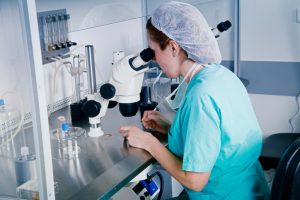 Years ago, lie detectors (polygraphs) were thought to be the cutting-edge approach in determining whether someone was telling the truth. Now science tells us that they are unreliable.
Years ago, lie detectors (polygraphs) were thought to be the cutting-edge approach in determining whether someone was telling the truth. Now science tells us that they are unreliable.
Polygraphs measure the physiological reaction to certain questions on the premise that all people react similarly when lying. Turns out this just isn’t true. Although lie detector results are not permitted into evidence in most courts, they were used for decades as the sine qua non to determine credibility. Still, many of my clients, right after they tell me they’re absolutely innocent, volunteer to take a polygraph test. I explain to them that while we could do that, the results would be inadmissible and therefore not dispositive.
What was once thought to be science has now been debunked.

3 Ways Lawyers Are Finding New Efficiencies With AI
Those who’ve adopted legal-specific systems are seeing big benefits.
Now take bite-mark evidence — thought to be scientific enough to merit being considered by a jury. Its validity was recently questioned by PCAST, the President’s Council of Advisors on Science and Technology. (The Council, dating back to Franklin D. Roosevelt’s time, was established to keep the president abreast of developments in science and technology in areas as varied as climate change to cybersecurity. President Trump has yet to appoint any members under his administration.) It’s believed that bite-mark evidence contributed to the wrongful convictions of at least 24 men in the U.S. in the last 20 years, all of whom were later exonerated through DNA evidence.
Similarly, other types of forensic evidence such as tread marks, mixed DNA analysis from minute quantities, and even fingerprint and firearm test results have been shown by scientific panels not to be as reliable as they first appeared.
Let’s take DNA. Although science is certain that no two people share the same DNA (except for identical twins), when a microscopic quantity is analyzed and it’s clear that besides the sample being super small, more than one person contributed to it, it becomes very difficult to state to any degree of scientific certainty who those contributors were. (It’s easier to say who they could not have been.) So forensic labs working with prosecution offices developed ways of quantifying the likelihood or probability that your client was a contributor. The numbers they come up with are astounding. Even though the testing methods differ from jurisdiction to jurisdiction (i.e., they are not standardized) and can be challenged, if introduced to a jury, the numbers are damning. They might hear (as they did in a murder case of mine) that even though picograms (1 picogram equals 1 trillionth of a gram) of DNA were found on the grip of a gun handle and that that tiny amount was contributed to by at least three individuals, there was a “likelihood ratio” of 1 out of one billion that someone other than my client and one other known individual plus one other unknown individual touched the grip. Try explaining that to a jury. All they hear is the “one billion” number and think he’s guilty. The validity of the testing method was so controversial that another judge in the same building did not permit the introduction of similar evidence in the case before him. My judge, however, let it in and my client was convicted.
In addition to the questionable reliability of the science in the above forensic areas, another issue is the neutrality of who’s doing the testing. Are the labs free-standing or do they work hand-in-hand with the prosecutor or police?

The Trump Gold Card: A New $1 Million Pathway To A U.S. Green Card
A new proposal would let wealthy foreign nationals secure an opportunity for a U.S. green card with a $1 million 'gift' to the government, sparking legal and ethical debate.
Take what happened recently in Massachusetts. Prosecutors agreed to throw out more than 20,000 drug convictions dating back to 2003 because the crime lab chemist admitted she either doctored or completely made up results on drug tests for years. People went away to jail based on tainted evidence.
New York State’s Office of Chief Medical Examiner (OCME) claims proudly not to be associated with any prosecutor or police office. The prosecutor always elicits that the OCME witness does not work for the prosecutor or police but under the auspices of the Department of Health. No dog in the race, right? Wrong. The bulk of OCME’s work comes from the investigations they do for either the police or prosecutors and when they take the stand, just start cross-examining them and see how neutral they come off. Even the most benign question elicits a confrontation.
This is why maintaining a neutral body such as the nonpartisan National Commission on Forensic Science, established to help the science of forensics remain independent and not beholden to a prosecutor’s office that looks for a win at any cost, is so important. However, in April, Attorney General Jeff Sessions announced the Commission would be disbanded.
His announcement came on the heels of more tough-on-crime talk, threats to bring back harsher mandatory sentencing, beefing up police forces, and a renewed “war on drugs.”
Say no to science, but yes to punishment? Criminal justice has just taken a step backward.
Toni Messina has been practicing criminal defense law since 1990, although during law school she spent one summer as an intern in a large Boston law firm and realized quickly it wasn’t for her. Prior to attending law school, she worked as a journalist from Rome, Italy, reporting stories of international interest for CBS News and NPR. She keeps sane by balancing her law practice with a family of three children, playing in a BossaNova band, and dancing flamenco. She can be reached by email at [email protected] or tonimessinalaw.com, and you can also follow her on Twitter: @tonitamess.